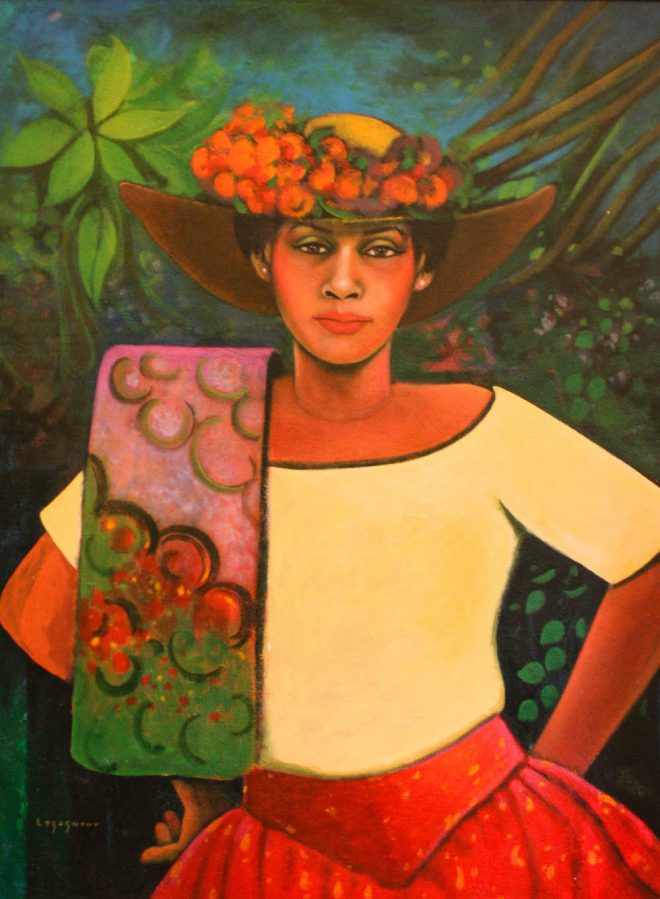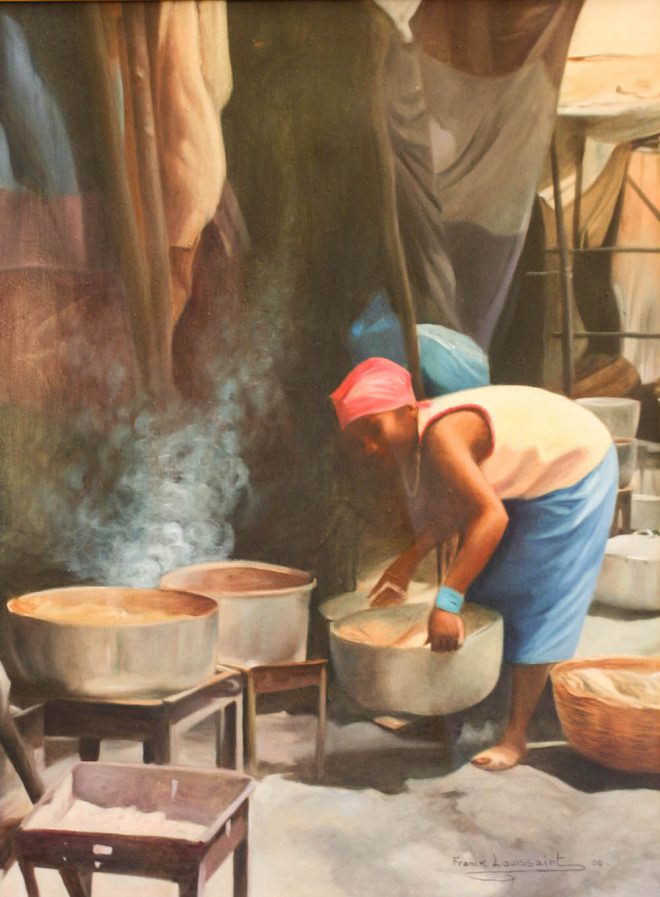A Way Back Home: “The Spirit of Haitian Culture” at the McKenna Museum
Lydia Y. Nichols discusses the journey to build the Haitian Cultural Legacy Collection, partly on view at the McKenna Museum of African American Art.

Jean Claude Legagneur, Le Belle Creole. Oil on Canvas. Courtesy the McKenna Museum of African American Art, New Orleans.
In 1944, a 29-year-old Jean Chenier Brierre boarded a ship in Port-au-Prince for Montreal to study medicine with a still-life oil painting of two coconuts, artist unknown. The coconuts reminded him of home, he’d later tell his eldest daughter Monique.
Brierre’s home, as he left it, had been crippled by 140 years of bullying at the hands of the United States and France for having set the example of self-liberation for enslaved Africans in the New World. In 1825, more than 20 years after untrained African soldiers fought for and won Haitian independence from Napoleon’s empire, France demanded reparations from the young republic in the amount of 150 million gold francs for land and labor lost (the French said that unless the indemnity was paid, Haiti would not be acknowledged in the global economy). Publicly funded education was nearly eradicated and the land had to be all but stripped bare of natural resources to pay the “debt.” The Haitian treasury forked over the last Francs in 1947.
Just a decade before Brierre left home, U.S. Marines withdrew after a 19-year occupation of Haiti during which the Haitian Constitution was altered to allow for foreign ownership of their mineral-rich land and a corrupt puppet government was installed.
Yet, as anyone who’s ever had one knows: home is home.
Ever wanting to preserve ties to his home and to educate others about the beauty of the African diaspora, the late Dr. Brierre amassed a collection of more than 500 acrylic and oil paintings, sculptures, and ironworks by Haitian artists over the course of nearly 70 years. Sixty-two of the works from his Haitian Cultural Legacy Collection are currently on display in “The Spirit of Haitian Culture: Creativity, Perseverance & Resilience” at the McKenna Museum of African American Art and Le Musée de f.p.c. Curated by Lana Meyon Watson, the exhibition speaks of the first black republic’s lasting spiritual wealth through the seductive depictions of rituals, marketplaces, celebrations, and other facets of daily life—an intentional contrast to the barren land and impoverished people more often shown to us as representations of Haiti through mass media.
Matching the vivid color and texture of each piece is the story behind its acquisition: stories of the Brierre family’s summertime trips to Haiti, the births of their children (Dr. Brierre’s mother-in-law would only allow him to take her daughter to the U.S. if he promised that all of their children would be born in Haiti), and frantic calls from Mrs. Brierre about pieces she wanted Dr. Brierre to purchase. The kind of stories that come, not only from experiencing life in a foreign land, but from simultaneously trying to hold onto and root black children in a culture that celebrates black identity, while living in a nation that seeks to render black victory invisible.

Frank Louissaint, Laundress. Oil on Canvas. Courtesy the McKenna Museum of African American Art, New Orleans.
Editor's Note
On Saturday, July 18, from 2 to 5pm, at the McKenna Museum of African American Art (2003 Carondelet Street), “The Spirit of Haitian Culture” exhibition will close with “Left with a Legacy: A Conversation with the Family of Haitian Art Collector, the Late Dr. Jean C. Brierre,” during which the Brierres will discuss the story of their collection, the importance of collecting art, and the impact their patriarch’s art collection has had on them.



